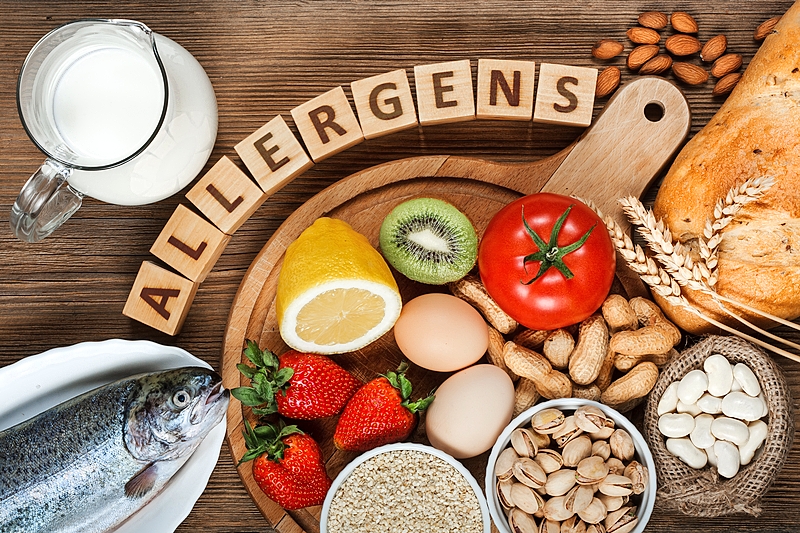Aw, Nuts!
By Mark Loehrke
Appears in the January 2024 issue.
Understanding food allergies

It has become one of those clear generational markers in American society—the food allergy. On one side, there is the general understanding among school-age kids and their parents that food allergies are a serious concern that should be treated as such—namely, by screening for triggers in as many situations as possible and, for the most part, keeping those triggers out of the school altogether. On the other side, there is a population of boomers and near-boomers who, while not wishing to see harm come to any child, can fondly recall the days of the nut cup as a common birthday party accoutrement and can’t quite understand why they never heard of any classmates having a bad reaction back in their school days.
It’s a back-and-forth that Dr. Jeff Kulik has certainly seen ebb and flow over his 19 years as a practicing allergist. While he has a couple of ideas of how to explain the perception divide, what he and the rest of the scientific community don’t necessarily have nailed down is the why. “In terms of this generational perception, peanut allergies have definitely grown over the past 15 to 20 years, and this is coupled with the fact that things like that were often underdiagnosed and/or underreported decades ago,” explains Kulik, who specializes in pediatric allergies and immunology at Edward-Elmhurst Medical Group. “But the question to the first part is why. Is it how the peanuts are processed or consumed? Is it something else in the environment now that is cross-reacting with the peanuts to stimulate that allergic antibody reaction among certain groups? There hasn’t really been a definitive answer yet.”
Whatever the reason, Kulik notes that peanuts are, in fact, the most common—and fastest-growing—food allergen among kids, generally followed by eggs and dairy. Meanwhile, seafood, shellfish, and tree nuts are the top three culprits for adults. As a doctor specializing in allergies, it’s probably not surprising that Kulik believes it’s worthwhile for anyone who suspects a possible food allergy to see a professional to get tested rather than just swearing off the offending food, but his reasoning is sound—why give up a food that you enjoy or that might be good for you without knowing the full story?
“There’s a lot of value in the diagnosis,” he says. “Sometimes I spend as much time debunking a potential food allergy and proving that a particular food is safe to eat as I do finding an actual food allergy. Many people may be avoiding certain foods because they think they’re allergic, and they may not be.” (Note that food allergies, however, are not to be confused with food intolerances, which do not involve the immune system; instead food isn’t being digested properly by the body.)
And if the diagnosis does indeed turn out to be a food allergy, Kulik says he always hopes the patient and everyone close to them will understand how important it is to educate themselves on what to do if a severe reaction occurs. “I wish more people had a better grasp on when and how to use an EpiPen,” he says. “Most people are hesitant to give an injection, but it’s the only thing that will really reverse a severe anaphylactic reaction. The delay in getting that shot is what leads to the highest risk of dying from a food allergy.”
Who’s Impacted?
Food allergies affect approximately 4% to 6% OF CHILDREN and 4% OF ADULTS.
Source: Centers for Disease Control and Prevention
Is It Really an Allergy?
Not everyone who experiences symptoms after eating certain foods has an allergy to them or needs to avoid that food entirely. Some people, for example, can experience an itchy mouth or throat after eating a raw or uncooked fruit or vegetable, which may indicate oral allergy syndrome—a reaction to pollen, not to the food itself. The allergen is destroyed by heating the food, which can then be consumed with no problem.
Source: American College of Allergy, Asthma and Immunology
Photo: iStock


